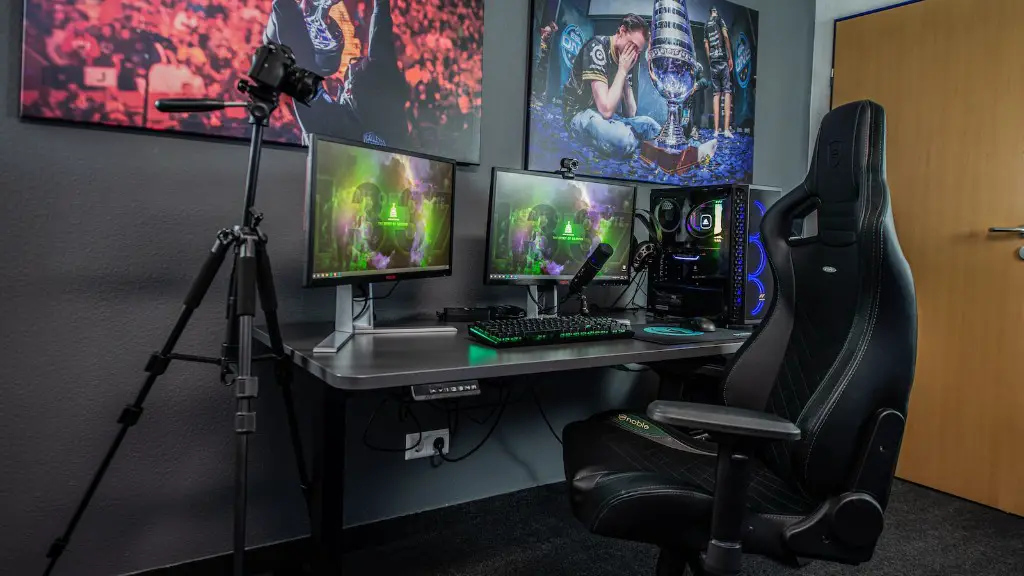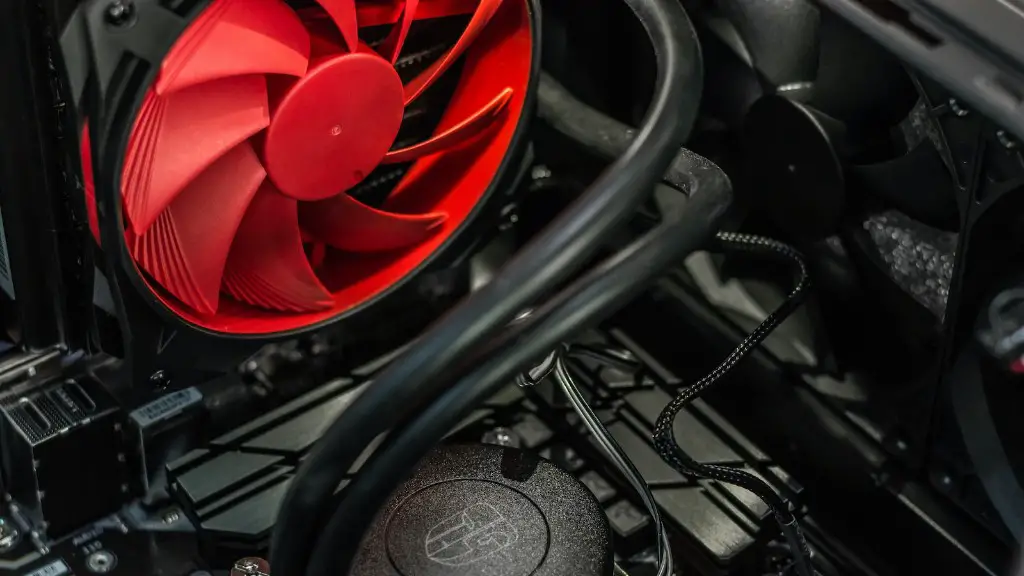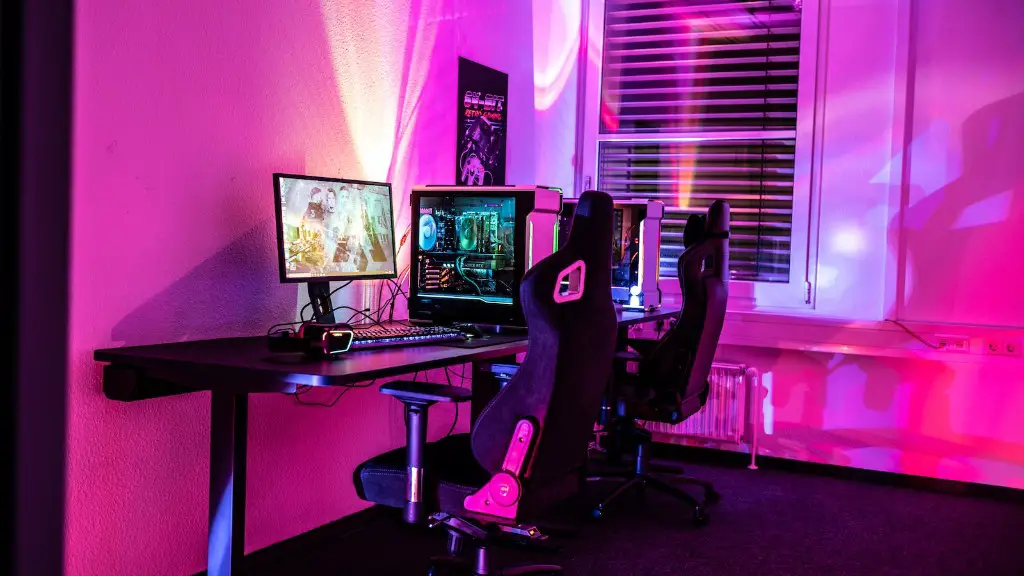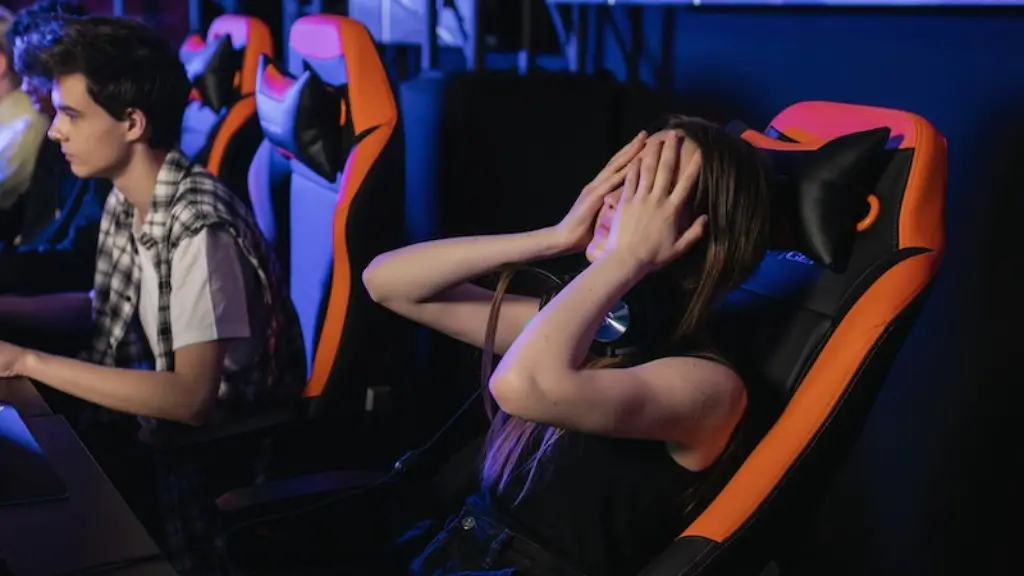Building a gaming PC requires knowledge of the various components and what they do. This post will discuss the purpose of the different components of a gaming PC, such as the GPU, CPU and RAM, to help you make the right selection when constructing your ideal gaming PC.
First and foremost, the most important component in any gaming PC is the GPU, or graphics processing unit. This is responsible for rendering the graphics of games and is the major factor in determining a PC’s gaming performance. It is important to select a GPU with enough ‘CUDA cores’, or processor cores, to handle the games you want to play. The amount of memory installed on a GPU also determines gaming performance.
The CPU, or central processing unit, is responsible for running the operating system and the software applications used in gaming. When selecting a CPU, you should consider the clock speed and the number of cores available. Generally, a CPU with a higher clock speed will be able to handle more demanding tasks, such as gaming.
The RAM, or random access memory, is used for running software applications and storing data. RAM is measured in terms of size, with more RAM generally meaning more performance. When selecting a gaming PC, you should make sure it has at least 4GB of RAM.
Storage space is taken up by the games and applications you install in the PC. It is important to select a storage device that provides enough space for the games you plan on playing. You can either choose a hard drive or an SSD, depending on your budget. HDDs are cheaper but usually have slower response times, whereas SSDs are more expensive but have much faster response times.
The motherboard is the core component of the gaming PC, responsible for connecting all the components together. It has numerous ports and slots for components such as the GPU, CPU and RAM. When selecting a motherboard, you should make sure it is compatible with your other components and is able to support the features you want in a gaming PC.
Lastly, the power supply is responsible for providing power to the various components in the gaming PC. It is important to select a power supply with enough power to support the components and always make sure the cables are properly connected. An inadequate power supply can cause problems such as random shutdowns or a lack of power.
Types of GPUs
There are many different types of GPUs available in the market with varying performance levels. The two most common types of GPUs are integrated GPUs, which are embedded in the CPU and are usually used for basic tasks such as web browsing, and discrete GPUs, which are standalone cards installed in the motherboard and are designed for gaming and graphic design applications. Discrete GPUs generally have higher performance than integrated GPUs.
The most popular brands for discrete GPUs are AMD and NVIDIA. NVIDIA GPUs are usually considered the best for gaming, due to their advanced features and support for the latest game titles. On the other hand, AMD GPUs tend to be more affordable while still providing good performance.
It is also important to consider the type of technologies supported by the GPU, such as DirectX 12, OpenGL, and Virtual Reality (VR). DirectX 12 and OpenGL are software applications that allow the GPU to render games more efficiently and are the most widely used in the gaming industry. VR support is required for the latest games that support virtual reality experiences.
When choosing a GPU, you should also consider the amount of memory available on the GPU. More memory typically results in better performance, but if you’re running low on budget, you can opt for a GPU with less memory but higher clock speeds.
Lastly, you should consider the wattage of the GPU. A high wattage GPU will require a power supply with higher wattage. It is important to select a power supply that can adequately provide power for the GPU.
Types of CPU
CPUs come in a variety of models from different manufacturers, with varying speeds and capabilities. Generally, Intel CPUs are the most popular choice for gaming PCs, due to their good performance and support for the latest games. On the other hand, AMD CPUs are slightly cheaper while still providing sufficient performance.
When selecting a CPU, it is important to consider its clock speed, which is measured in GHz. Higher clock speeds mean more performance, but more power and cooling is also required. Additionally, the number of cores and threads available on the CPU will also influence its performance. More cores and threads enable the CPU to handle more tasks simultaneously.
It is also important to consider the type of technology supported by the CPU, such as Hyperthreading, Turbo Boost, and multithreading. Hyperthreading is a technology offered by Intel CPUs that enables each core of the CPU to function as two logical cores, allowing for greater performance. Turbo Boost is a feature of Intel CPUs that allows it to boost its clock speed under certain conditions. Multithreading is a feature of AMD CPUs that enables it to execute multiple threads on the same core.
Lastly, it is important to consider the socket type of the CPU. The socket type determines which type of motherboard the CPU will be compatible with, so it is important to select a CPU and motherboard combination that will work together.
Types of RAM
There are two types of RAM commonly used in gaming PCs, DDR3 and DDR4. DDR3 is the older type of RAM and is generally slower but cheaper than DDR4. DDR4 is the latest type of RAM and is faster and more expensive than DDR3. For a gaming PC, it is suggested to go with DDR4 RAM.
When selecting RAM, it is important to consider the capacity, speed and timing of the RAM. The capacity is measured in terms of gigabytes (GB) and is the amount of RAM installed in the PC. Generally, 8GB or more of RAM is recommended for gaming PCs. The speed of RAM is measured in MHz and is a major factor in determining the performance of the gaming PC. Lastly, the RAM timings are a set of parameters which indicate the speed at which data can be retrieved from RAM.
Another important factor is the type of RAM. The two most common types of RAM are single-sided and double-sided. Single-sided RAM has chips on one side only and is usually cheaper, while double-sided RAM has chips on both sides and is usually more expensive. Some motherboards require double-sided RAM for optimal performance.
It is also important to select the correct RAM slot when installing the RAM. Most motherboards have two or four RAM slots, so if you are installing two or four RAM modules, make sure to insert them into the correct slots.
Types of Storage
Storage for a gaming PC generally falls into two categories, hard drives and solid-state drives (SSDs). Hard drives are mechanical storage devices that use spinning disks to store data and are cheaper than SSDs, but they are much slower. SSDs are flash storage devices that use no moving parts and are much faster than hard drives, but they are more expensive.
When selecting a storage device, it is important to consider the capacity, speed and type of storage device. The capacity of the storage device is measured in terms of storage space, and a large storage device is important if you plan to install a lot of games. The speed of the storage device is also important and depends on the type of device – an SSD will be much faster than a hard drive. Lastly, if you only require a small amount of storage space, a smaller capacity SSD may be ideal as it will be faster and cheaper than larger capacity SSDs.
It is also important to consider the type of connector used by the storage device. Most motherboards support SATA and M.2 connectors for storage devices, so you should make sure the device you select is compatible with your motherboard.
Types of Motherboards
Motherboards are one of the core components of a gaming PC and come in a variety of sizes and configurations. Generally, the larger the size of the motherboard, the more features it will offer. For example, an ATX motherboard is larger than a micro-ATX and offers more features, such as more USB ports and more RAM slots.
When choosing a motherboard, you should consider the socket type of the CPU and the form factor of the motherboard. The form factor of the motherboard determines what type of case it will fit in, so you should make sure to select a motherboard with the right form factor. Additionally, you should consider the number of PCIe slots available on the motherboard, as some GPUs require more than one slot.
You should also consider the type of ports and slots available on the motherboard, such as USB, SATA and M.2. USB ports are used to connect external peripherals such as keyboards and mice. SATA ports are used to connect storage devices such as hard drives and SSDs. M.2 slots are used to connect ultra-fast storage devices, such as NVMe SSDs.
Lastly, it is important to consider the type of technologies supported by the motherboard, such as overclocking and SLI. Overclocking is a feature of some motherboards which allows you to boost the performance of the CPU and RAM by increasing their clock speed. SLI is a technology which enables you to use multiple GPUs in parallel, allowing for increased performance in some games.
Types of Power Supplies
Power supplies are an important component of a gaming PC and come in a variety of wattages to meet your needs. Generally, a good quality power supply with enough wattage to power your components is recommended. It is also important to make sure the power supply comes with the right type of adapters, such as SATA and PCIe, for your components.
There are two types of power supplies available, modular and non-modular. Modular power supplies have removable cables, allowing for a cleaner look inside the case and less cable clutter. Non-modular power supplies have fixed cables and are usually cheaper. It is also important to consider the efficiency rating of the power supply. A higher efficiency rating means more power will be used for components and less will be wasted as heat.
When selecting a power supply, it is important to consider the total wattage, the number of PCIe connectors, and the type of voltage. More wattage means a larger and more powerful power supply which is capable of handling more components. The number of PCIe connectors is important as some GPUs require more than one connector. Lastly, the type of voltage the power supply has is important, as some components may require a specific type of voltage.





